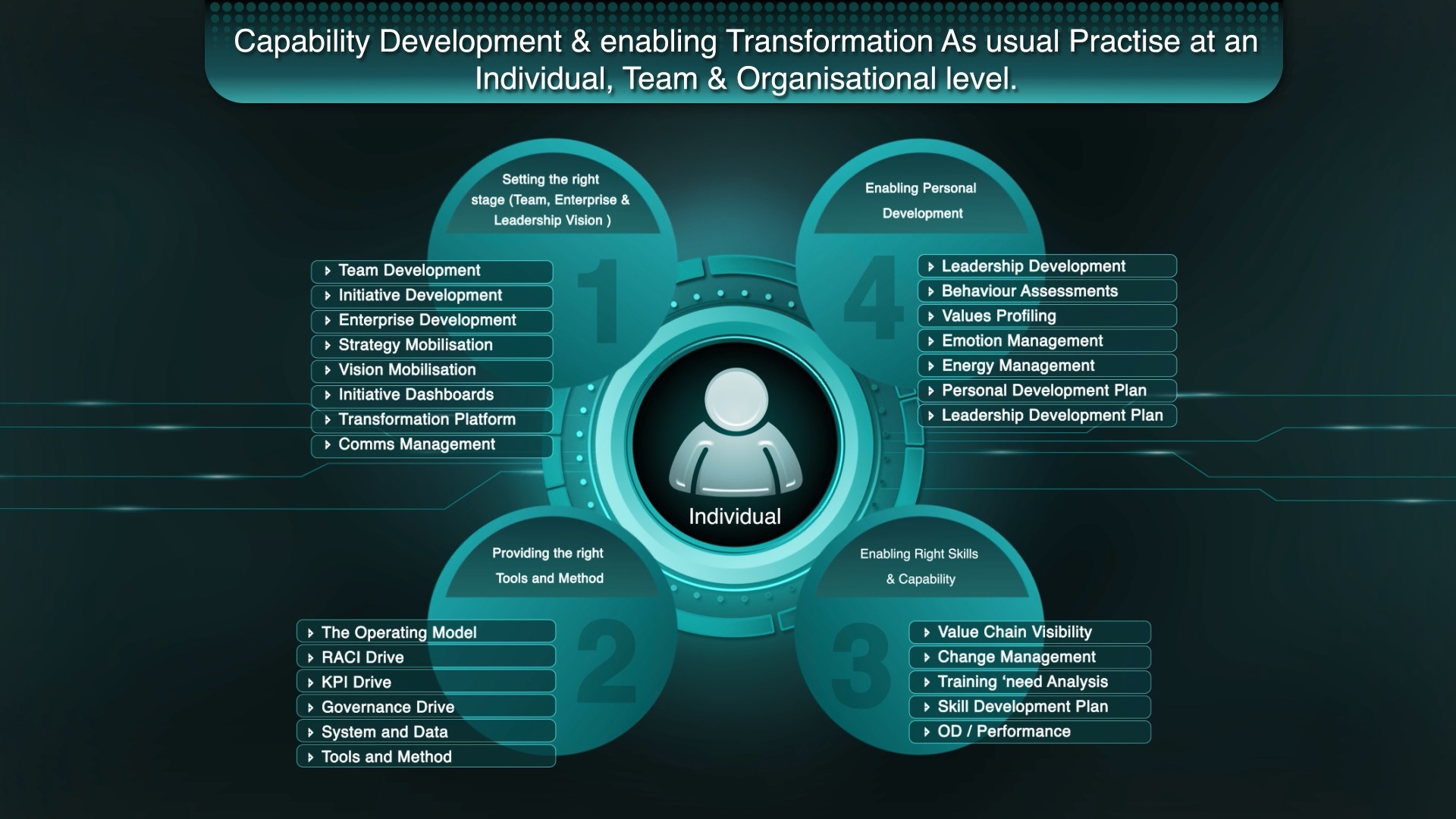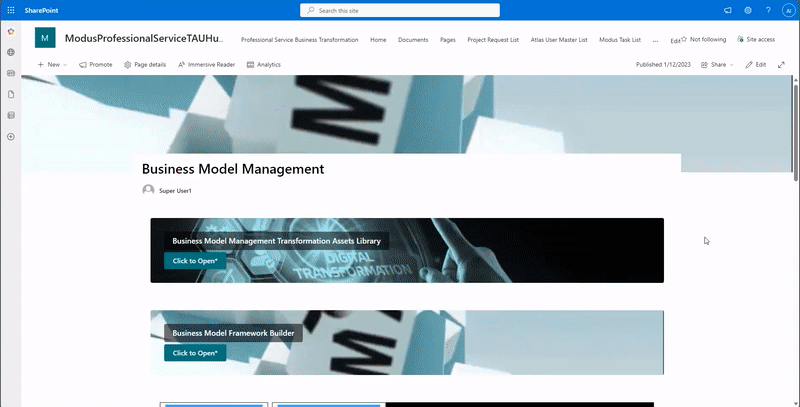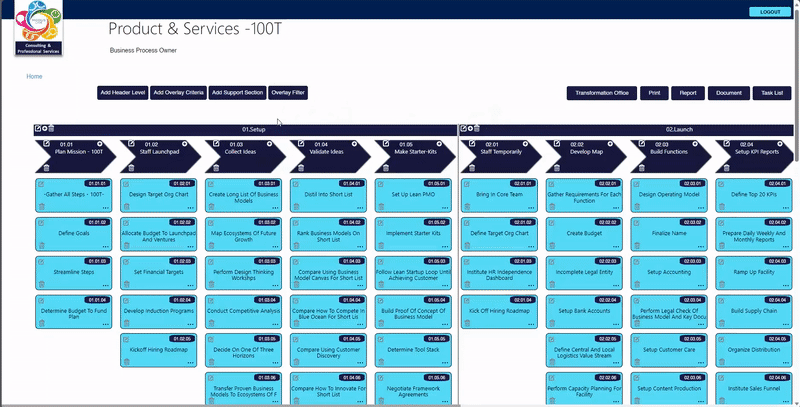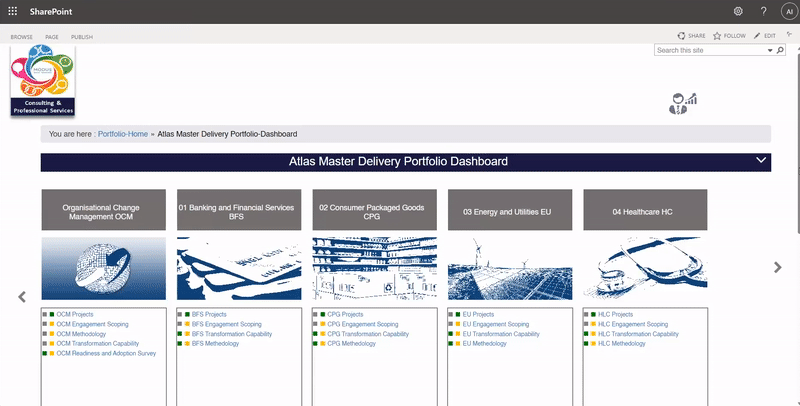Professional Services – Enterprise Business Transformation
An Introduction To Our Professional Services Platform
Modus Business Transformation Core Modules
Building, Driving and Sustaining your Business Transformation and embedding a 'Transformation As Usual' platform.
01 - Business Model Management - Manage and Adapt
By leveraging the Business Model Management Hub, enterprises can navigate complex transformation processes with confidence and precision, driving sustained success and growth.
The Business Model Management Hub within Modus ETP is an essential tool for Professional Service Enterprises. It empowers organizations to set up, analyze, and adapt their current and future business models, addressing various aspects such as markets, customers, products, and services. This hub is crucial for maintaining a competitive edge and ensuring sustainable growth. Here’s why it's important:
Key Features and Benefits:
• Comprehensive Business Model Management:
Set up and evaluate current and future business models.
Adapt to changing market conditions and customer needs. Business
• Transformation Survey:
Conduct detailed surveys to understand transformation needs.
Gather insights to inform strategic decisions.
• Transformation Strategy Hub:
Develop and implement effective transformation strategies.
Align business models with long-term goals.
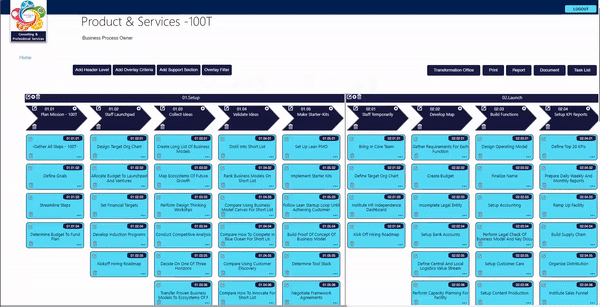
Importance of the Value Chain Modeler:
• Enhances visibility into every aspect of the business.
• Supports informed decision-making and strategic planning.
• Facilitates continuous improvement and innovation.
• Aligns operations with overall business strategy for sustainable growth.
02 - The Value Chain Modeler - Manage and Adapt
By utilizing the Value Chain Modeler, enterprises can effectively manage and adapt their business models, ensuring all elements of the value chain work harmoniously towards achieving business objectives.
The Value Chain Modeler within Modus ETP is a powerful tool designed for Professional Service Enterprises. It allows organizations to fully understand their complete business model and the touch-points across their end-to-end value chain. This enables businesses to articulate, illustrate, and strategically plan their growth. Here’s why it’s essential:
Key Features and Benefits:
• Value Chain Analysis:
Comprehensive examination of all business activities.
Identify strengths, weaknesses, and opportunities across the value chain.
• Value Chain Surveys:
Gather detailed insights from stakeholders.
Use data to refine and optimize business processes.
• Target Operating Model:
Develop a future-state operating model aligned with strategic goals.
Ensure smooth transition and implementation of changes.
03 - The Operating Model - Organize and Sustain
By leveraging multiple operating models, enterprises can ensure their operations are organized, sustained, and continuously optimized, driving long-term success and growth.
The Operating Model within Modus ETP is crucial for Professional Service Enterprises, enabling them to organize and sustain their operational processes and activities effectively. This model helps define, capture, and visualize the essential elements of business operations, creating a dynamic 'living' process knowledge hub, also known as the Ways Of Working Centre Of Excellence. Here’s why it’s important:
Key Features and Benefits:
• TOM and Operating Model Design:
Create detailed Target Operating Models (TOM).
Align operations with strategic goals.
• Operating Model Components:
Define and manage core components of your operating model.
Ensure consistency and efficiency across operations.
• Product and Services Value System Design:
Design comprehensive value systems for products and services.
Optimize value creation and delivery.
• Customer Experience Design (CX):
Develop exceptional customer experience strategies.
Enhance customer satisfaction and loyalty.
• Business Role and Skill-Based Design:
Define roles and required skills within the organisation.
Ensure alignment with business objectives.
• Process Support Office:
Maintain a dedicated office for process support and optimization.
Continuously improve and sustain business processes.
04 - The Transformation Assets and Portfolio Module - Discover and Transform
By leveraging the Transformation Assets and Portfolio Module, enterprises can ensure a successful and efficient transformation journey, driving sustained growth and innovation.
The Transformation Assets and Portfolio Module within Modus ETP is essential for Professional Service Enterprises, enabling them to successfully execute and deliver their transformation vision. By deploying a comprehensive library of pre-defined templates and methods, businesses can streamline their transformation processes. Here’s why it’s crucial:
Importance:
• Ensures structured and efficient transformation processes.
• Enhances alignment with strategic objectives.
• Supports continuous improvement and optimization.
• Facilitates comprehensive oversight and management of transformation
efforts.
• Value Chain Analysis
• Business Model Analysis
• Transformation Strategy
• Transformation Mobilization
• Planning Management
• Transformation Log Management
• Financial Management
• Communication Management
• Operating Model Management
• Process Design Management
• IT Design Management
• Build and Test Management
• Implementation Management
• Change Management
• Personal Development Assessments
• Training Management
• Organizational Design Management
• Transformation Review
• Optimization and Governance
05 - Organizational Change Management - Unite and Thrive
By leveraging the Organizational Change Management module, enterprises can unite their teams, thrive through change, and achieve sustainable success.
The Organizational Change Management module in Modus ETP is designed for Professional Service Enterprises to drive and achieve full adoption of change. It engages and builds organizational structures, pathways, and skills down to individual roles and resources. Here’s why it’s essential:
Key Features and Benefits:
• Change Management Office:
Central hub for managing change initiatives.
Ensure cohesive and coordinated change efforts.
• Comms Management Office:
Streamline and manage communication strategies.
Ensure clear and effective communication during transformations.
• Organizational Design Management Office:
Design and optimize organizational structures.
Align organizational design with strategic goals.
• Leadership Development Practices:
Develop and empower leaders to drive change.
Enhance leadership skills and capabilities.
• Change Workbench:
Tools and resources for managing change processes.
Facilitate effective change implementation.
• Adoption and Course Correct:
Ensure successful adoption of changes.
Identify and address issues promptly to stay on track.
• Training and Launch Academy:
Provide comprehensive training programs.
Support smooth transitions and successful launches.
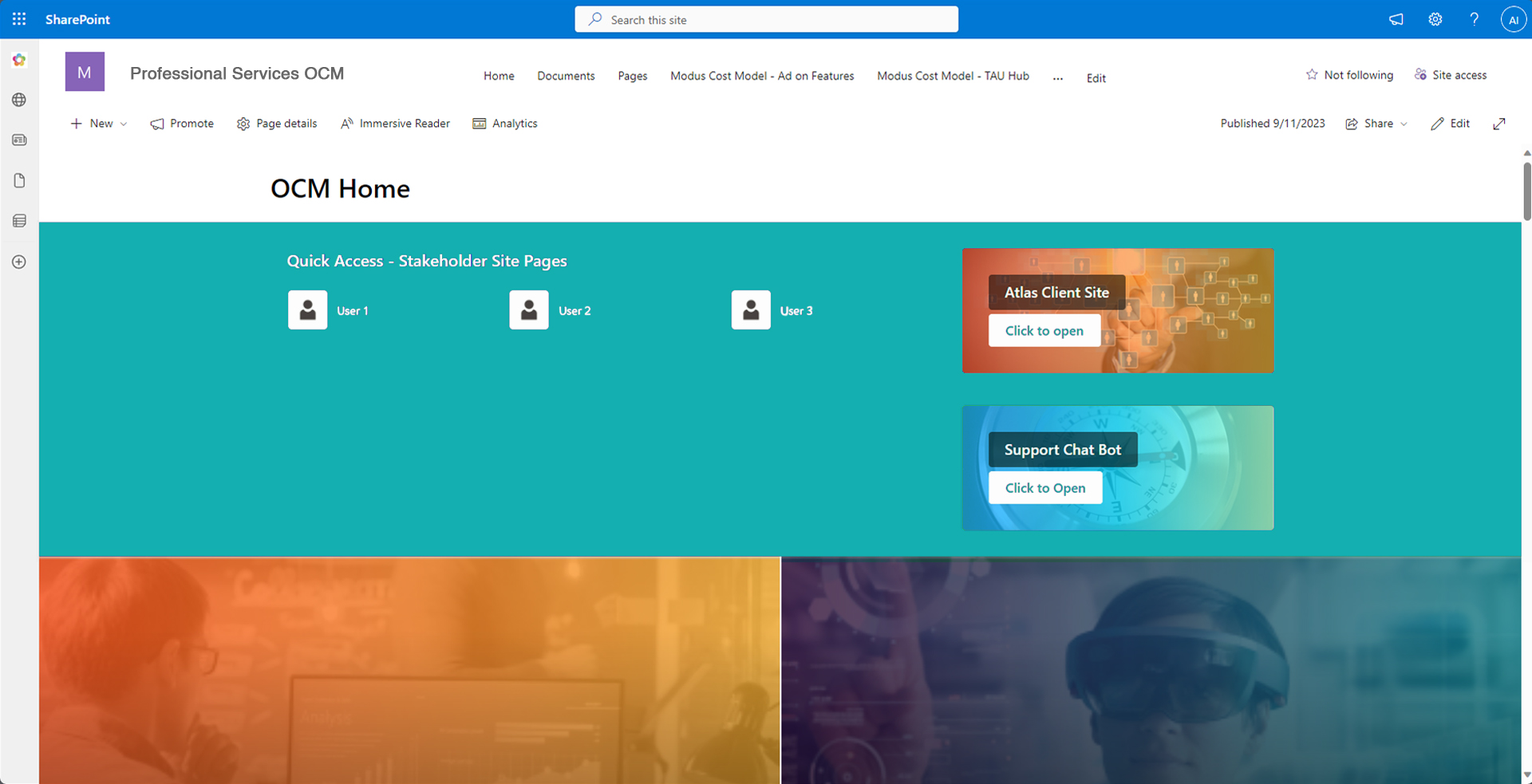
Importance of Organizational Change Management:
• Ensures full adoption of changes across the organization.
• Enhances employee engagement and satisfaction.
• Builds resilient and adaptable organizational structures.
• Supports continuous learning and development.
• Drives successful transformation and long-term growth.
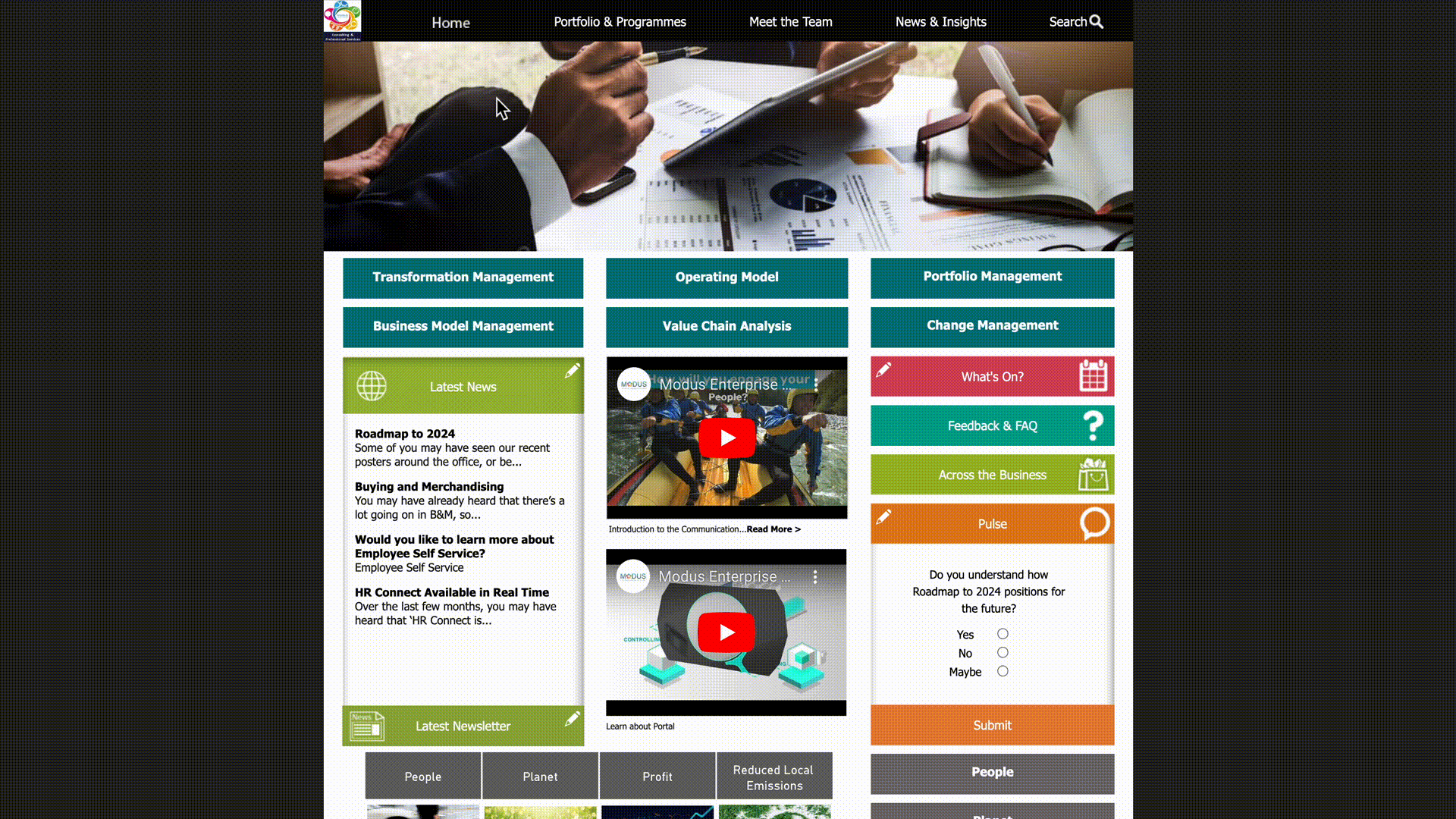
Importance of the Engagement Hub:
• Enhances communication and collaboration across the organization.
• Keeps all stakeholders informed and engaged.
• Supports a smooth and coordinated transformation process.
• Facilitates timely feedback and continuous improvement.
06 - Engagement Hub - Share and Guide
By leveraging the Engagement Hub, enterprises can ensure a unified, informed, and engaged workforce, driving successful and sustained transformation.
The Engagement Hub within Modus ETP is vital for Professional Service Enterprises, centralizing communication and guiding transformation efforts. It ensures everyone is informed, engaged, and aligned with the transformation journey. Here’s why it’s important:
Key Features and Benefits:
• Centralize Transformation Comms:
Streamline all transformation-related communications.
Ensure consistent messaging across the organization.
• Latest News:
Stay updated with the latest transformation developments.
Keep everyone informed about progress and milestones.
• Poll Surveys:
Gather feedback and insights from employees.
Engage the workforce in the transformation process.
• Transformation Team Areas:
Dedicated spaces for transformation teams to collaborate.
Enhance teamwork and coordination.
• Business Team Areas:
Spaces for business teams to stay connected.
Foster cross-functional collaboration.
• Calendar Roadmaps:
Visualize and plan transformation timelines.
Ensure everyone is aware of key dates and milestones.
• Language Capability:
Support multi-language communication.
Engage a diverse workforce effectively.
• Transformation and Change Alerting:
Real-time alerts for important updates and changes.
Keep everyone aligned and responsive to new developments.
Transformation As Usual Capability Model
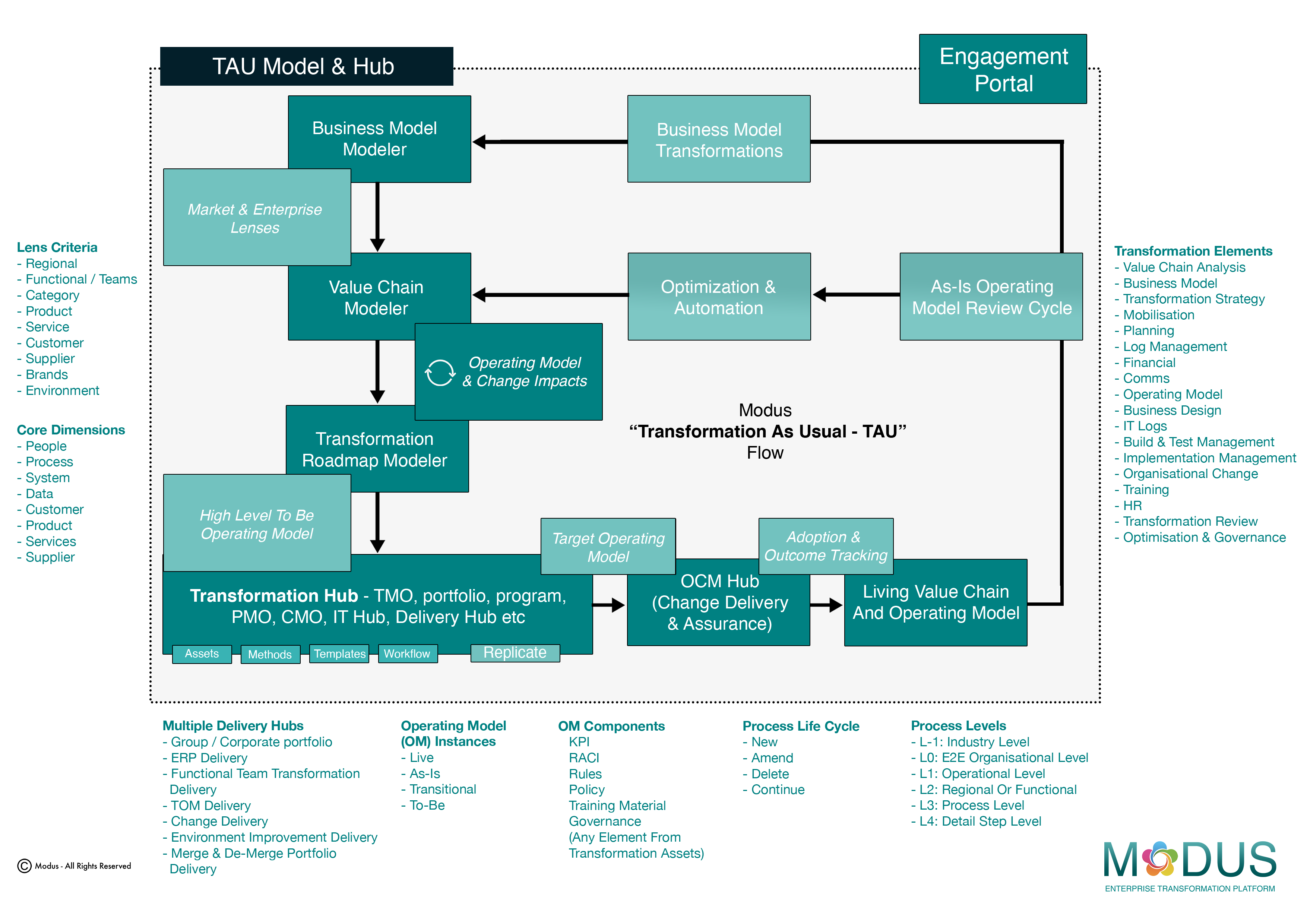
Individual and Team Capability Development
